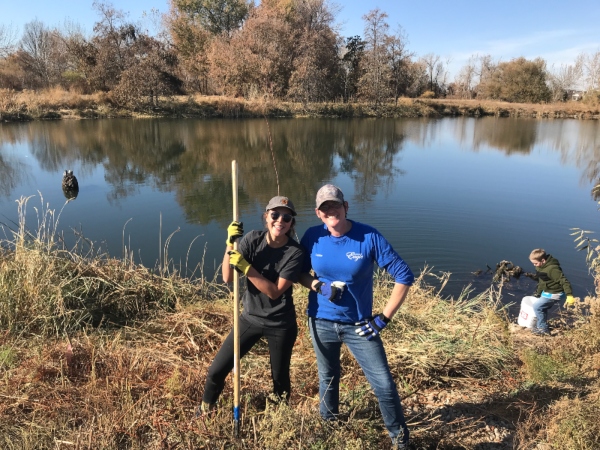
Native vegetation flourishes at Charlie Wood Park site in Eagle
Native willows planted by Boise River Enhancement Network volunteers at the Charlie Wood Park site in Eagle flourished during the hot and dry summer of 2021. Willows planted as 3-foot-high stakes in 2019 now soar overhead, a testament to the regenerative power of nature, proper planting technique and good luck. Hundreds of willows and black cottonwoods are also naturally starting to grow along the shore of the two former borrow pits at the future park site. The site is located about 100 yards from the Boise River and is readily accessed from S. Edgewood Lane.
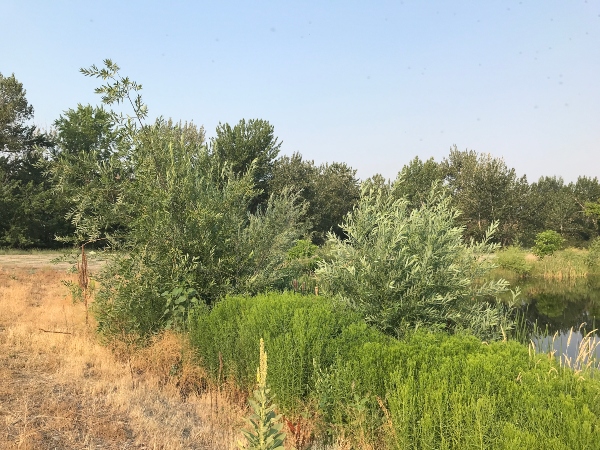
The habitat enhancement project kicked off in March 2019 when volunteers planted 259 willow stakes. Hundreds more willow stakes and other native shrubs including Woods’ Rose (Rosa woodsii) were planted later in 2019. Read more about the work accomplished in 2019. Willows were planted again in 2020 and 2021. Pacific willow (Salix lasiandra) and yellow willow (Salix lutea) are dominant. Coyote willows (Salix exigua) and black cottonwood (Populus trichocarpa) are present and increasing in numbers.
BREN also brought volunteers to the site in 2020 and 2021 to clear away invasive annual weeds. The Woods’ rose that languished under the heavy cover of the annual weeds have now grown tall enough to clear the top of the weeds.
Cooperative Effort Documented in Photos
This project is a cooperative effort between BREN and City of Eagle Parks and Recreation and Public Works. Project partners are the Land Trust of the Treasure Valley and Golden Eagle Audubon Society Native Plant Network. Assistance has been provided by SUEZ Water Idaho, Xylem/Sensus, GEICO Treasure Valley, Idaho Department of Fish and Game, Saalt, River District HOA, Renovare HOA and Eagle High School students,
The best way to understand the amazing enhancement is this report and photo points compiled by Madison Skinner with the Land Trust of the Treasure Valley.
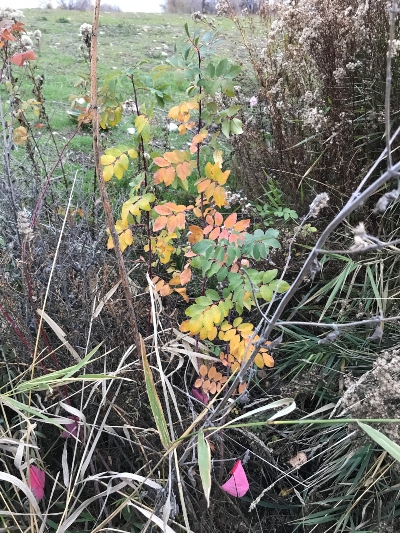
Beavers Love the Willows
Beavers didn’t miss a beat at the Charlie Wood Park site. Weeks after the first willow stakes were planted in 2019, beavers had chewed down many of them. Beavers have been after the willows ever since. Many of the largest trees were chewed down to a stump in 2021 and dozens of the smaller trees have also been chewed down. The willows commonly resprout, but it takes time for the trees to provide the same shade and habitat as the original. This may never happen if the beavers chew down the regrowth.
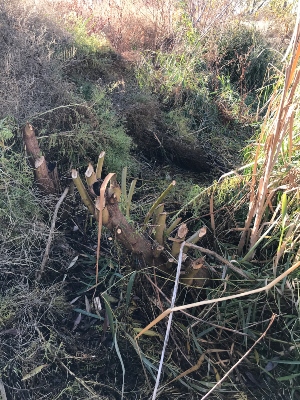
Caging for Temporary Protection
Caging willows and cottonwoods with wire keeps the beavers at bay, and this technique is used extensively along the Boise River. BREN volunteers caged 25 willows on November 18, 2021. It’s difficult and impractical to cage all the willows and cottonwoods. The long term solution is to have enough willows and cottonwoods along the Boise River and around the ponds to ensure healthy habitat despite beaver harvest. Beaver trapping and removal can also be used to reduce beaver numbers while plants establish.
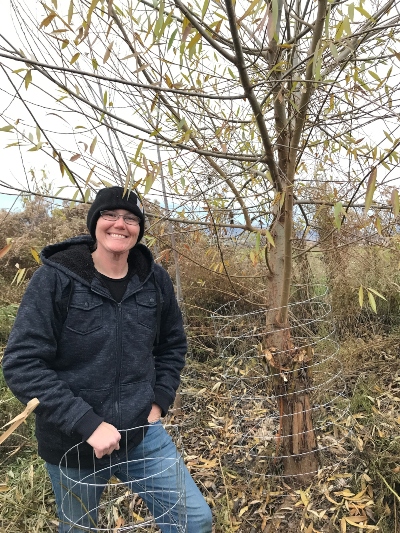
Non Native Species Claim the Space
Non native species including catalpa (Catalpa speciosa), green ash (Fraxinus pennsylvanica), silver maples (Acer saccharinum) and false indigo (Amorpha fruiticosa) have claimed about 20% of the shoreline around the ponds. The presence of these invasive plants prevents the establishment of native species. Native plants provide much more value to the ecosystem than the non natives, especially to birds and fish because the native plants support the diverse population of insects the birds and fish depend on. 300 species of Idaho insects (Lepidoptera) eat willow while only 8 species eat false indigo.
False indigo is especially worrisome because it dominates the understory and spreads very quickly. False indigo is well-established along the Boise River and canals and wetlands in Eagle. Each mature bush produces thousands of seeds. It was first seen along the north side of the west pond at Charlie Wood Park in 2019. BREN volunteers treated more than a dozen false indigo bushes along the bank in October 2020. Regrowth and new growth was treated twice in 2021. Continued monitoring and treatment will be required, but the danger of domination will diminish as willows and cottonwoods claim the space.
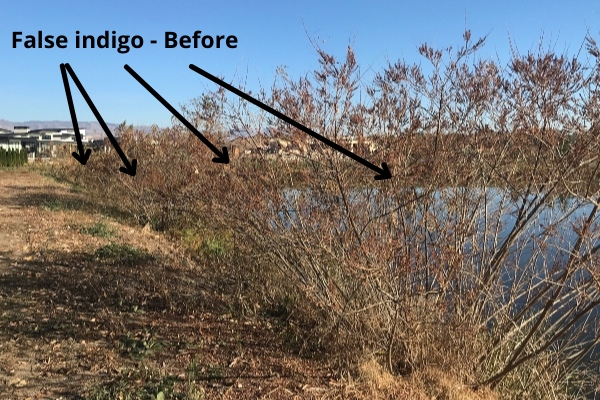
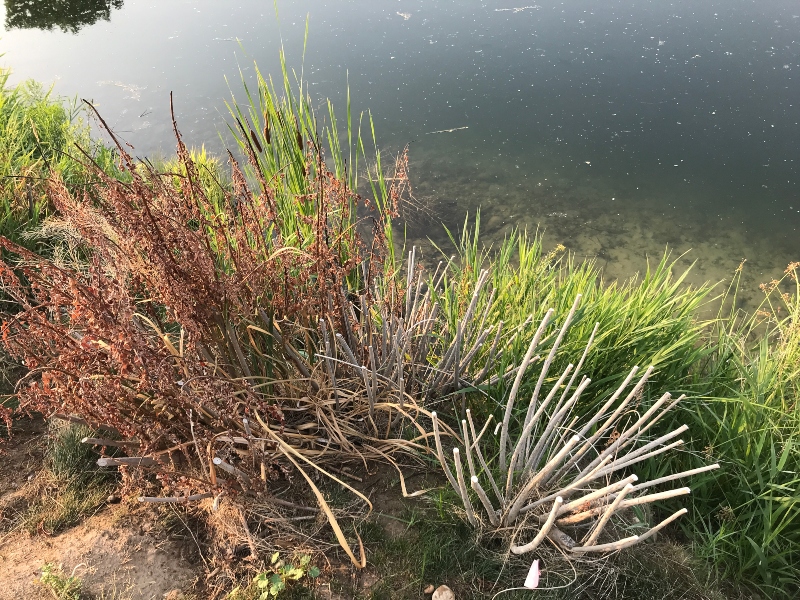
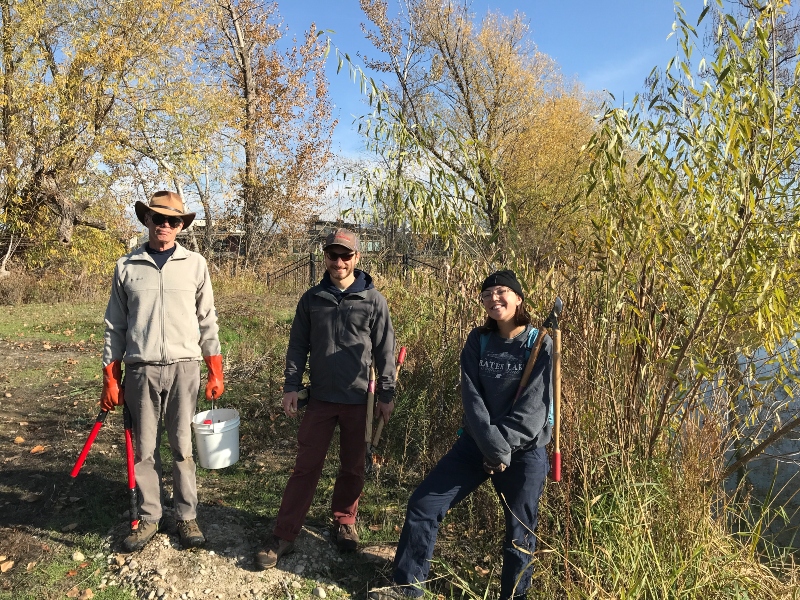
Enhancing Habitat to Support Native Birds and Wildlife
The lower Boise River was once meandering and multi-channeled with lots of wetlands. Black cottonwoods, willows, Woods’ rose and other native plants provided a rich environment for birds, fish and wildlife. As described in the Boise River Enhancement Plan, channelization and development of the floodplain has almost eliminated wetland habitat in the Treasure Valley. This cooperative riparian habitat project will create new native habitat and contribute to enhancement efforts underway up and down the Boise River.
Thank you to the hundreds of volunteers who’ve participated!
Visit the project website to learn more.